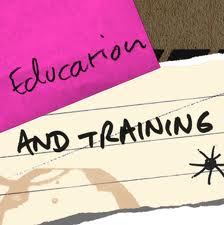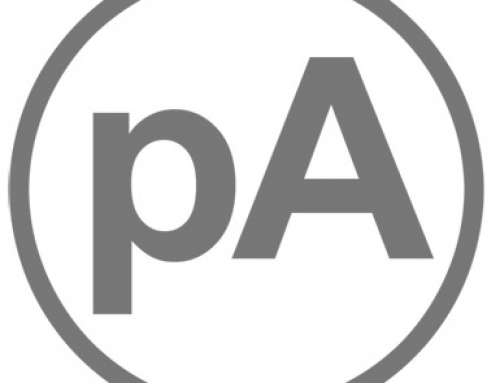 Most of my career has been spent growing the business of private education: marketing vocational schools, training admissions reps, building new campuses, installing marketing systems, and expanding the academic programs. The primary goal in successfully marketing all these campuses has been singular: understand the students. If I could get an entire staff to understand that that, then what they needed to do to successfully market the campus became clear.
Most of my career has been spent growing the business of private education: marketing vocational schools, training admissions reps, building new campuses, installing marketing systems, and expanding the academic programs. The primary goal in successfully marketing all these campuses has been singular: understand the students. If I could get an entire staff to understand that that, then what they needed to do to successfully market the campus became clear.
The school that best understands its students’ motivations and personality will always get better performance from its marketing efforts. You must understand the students in order to win their hearts. Win their hearts and you have someone who will give good word of mouth about your school for a decade (and you know valuable that is).
No search engine optimization or re-targeting algorithm can ever replace the gut instinct of a real person who understands what is required to make a personal connection to a prospective student. In this post we’ll talk about a handful of broad ideas for marketing that are specifically targeted towards vocational and career education schools as I’ve encountered them through the years.
Balance “dream” with reality in your marketing message.
Far too many schools (especially some with which I was in competition that focus in the arts and media fields) focus entirely on selling the dream: the goal, the light at the end of the tunnel after they graduate. That’s fine, and it often works, however student retention rate (if you’re reading this, you’re most likely in education and shutter at that term in relation to accreditation) becomes a tight rope walk. If all you do is sell the dream, the per-capita level of commitment of your student body decreases, and consequently, your drop out rate will increase. Don’t shy away detailing how difficult your program is, how hard the work after graduation will be – brag about a test or project that students dread because of its difficulty. You don’t do this in the very beginning with outbound advertising, of course, but in talks, materials, tours, open houses, etc. thereafter: push reality and dream. Make sure they are 100% aware of what they want to start. They’ll respect the school more for it.
Cast your admissions staff.
Making a connection with people requires personality. I grant the fact that a good admissions person, who is essentially aggressively sales-driven, can do a good job at enrolling students. However, the normal push, push, push admissions model always turns off a significant number of prospective students. You can get bursts of enrollments, but you also get higher number of unhappy students after they’ve started because they never truly bonded with the school and its people.
As such, in the name of “making a connection” with students, I’ve found the most success approaching staffing more like casting a movie (or sit-com) and less like a traditional “who has the best resume and can type the most words per minute”. This most times means a little more training and time is required to get all the pieces to fit, but once you have a solid dynamic within your admissions team, your conversions will definitely increase.
Don’t protect information; SHARE IT.
Especially with a target demo that is almost entirely Internet savvy. The truth is anyone can find the information that you teach at your school. What they cannot get online is the experience (that’s why tours are so important).
They cannot get the experience of the instructor staff, the location, student services staff who cares, all those things that make a school a school, but they CAN find the information… so why protect against it? Share it.
The more you open the information doors (both physically on campus as well as metaphorically with online webinars, resources, videos, etc.) the more your school becomes the authority on the subject matter. It gets your school’s name on all the topics relevant to that which you teach. It demonstrates your school not only knows the information, but is a leader and an authority on the topic.
Throw all your marketing materials onto a table and step back.
How does the pile look? Is the branding cohesive across all materials? Does each postcard, micro-page, course catalog, and brochure have a distinct purpose in the marketing or admissions cycle? Can you organize them so that they line up chronologically as if they can physically demonstrate your marketing strategy and timeline? If not: fix it. PLAN. And above all, ensure your branding and graphic design is integrated across the board. Parents and students should be able to see a small corner of any of your materials buried under other magazines on the coffee table and immediately know from that glimpse that it belongs to your school.
Perfect your school tour’s spontaneity and personalization.
Students want a school to teach them, but they also want to love being there. That requires a certain amount of spontaneity and excitement. School tours need to have that feeling (how the excitement is ultimately achieved is best determined by you and the programs). Tours also need to demonstrate “home” insofar as it feels very personal: saying hello to students on campus (and knowing their name, asking about their classes, etc.). Personal and spontaneous; every tour will end with a smile… and nearly every tour that ends with a smile results in an application.
If you’re a head of admissions or the owner of a school and you’re not having every single person on your staff give you practice tours so you can see how they do it (and who is the best), then you should start there. The tour closes the deal and injects the excitement so they finish the paperwork, complete financial aid forms, etc. You need them to have that level of excitement to see the enrollment through to completion.









